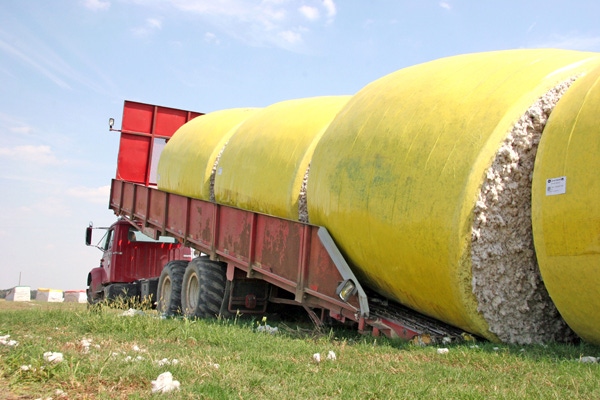
The Mid-South is experiencing a good harvest. But it didn’t come without struggle.
“We dealt with an early drought during the planting season,” says John Kruse, LSU AgCenter cotton specialist. “That harmed some growers, no question.
“Overall, though, growers did a good job getting a crop up and growing. All through the Delta, growers battled insect pressure – heavy bollworms late, spider mites and plant bug pressure for a long stretch of the season. Interestingly, the farther west you traveled in the state, the less the insect pressure. Also, stink bug pressure was down quite a bit from years past.”
Arkansas, too, has “some bad cotton and lower-yielding spots,” says Tom Barber, Extension cotton agronomist for the University of Arkansas Division of Agriculture. “We always do. It’ll boil down to irrigation timing and planting dates. I’ve got some planting date studies and seen some late-planted cotton that won’t do as well. But if we planted in the normal window and irrigated on time, everyone has a good chance for nice yields.”
The state did have “a massive insect pest year,” says Barber. “The usual suspects showed up. Where they were, plant bugs were terrible. Gus Lorenz (a veteran Arkansas Extension entomologist) says this season had the worst worm pressure he’s ever seen. We’re mostly growing varieties with some type of Bt technology but even in those we had to spray for worms multiple times. Soybean pests were horrible, as well – loopers, armyworms and bollworms. The worm pressure has been tremendous. But, for the most part, things have ended up well.”
Despite all the problems, Louisiana growers “are optimistic for the first time in a long time,” says Kruse.
Another issue for Louisiana cotton is the phase out of DPL555. “I’ve been very impressed with how well growers have done with that. That variety has been dominant in Louisiana.
“2010 has been a learning year for many growers who are trying out new varieties. Actually, it may have been their second year to grow them but, because of last harvest’s late rains, it was impossible to evaluate the new varieties. The conditions didn’t allow for good data. Now, we’re getting a handle on it.”
About the Author(s)
You May Also Like




